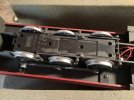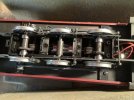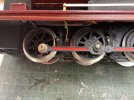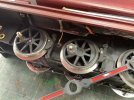Greg Elmassian
Guest
I vote for using brass castings, and plastic. Very few zinc-based castings last a long time (in large pieces, like sideframes and chassis)...
I have several friends that collect older trains, and "Zinc pest" is a problem.
Greg
I have several friends that collect older trains, and "Zinc pest" is a problem.
Greg






